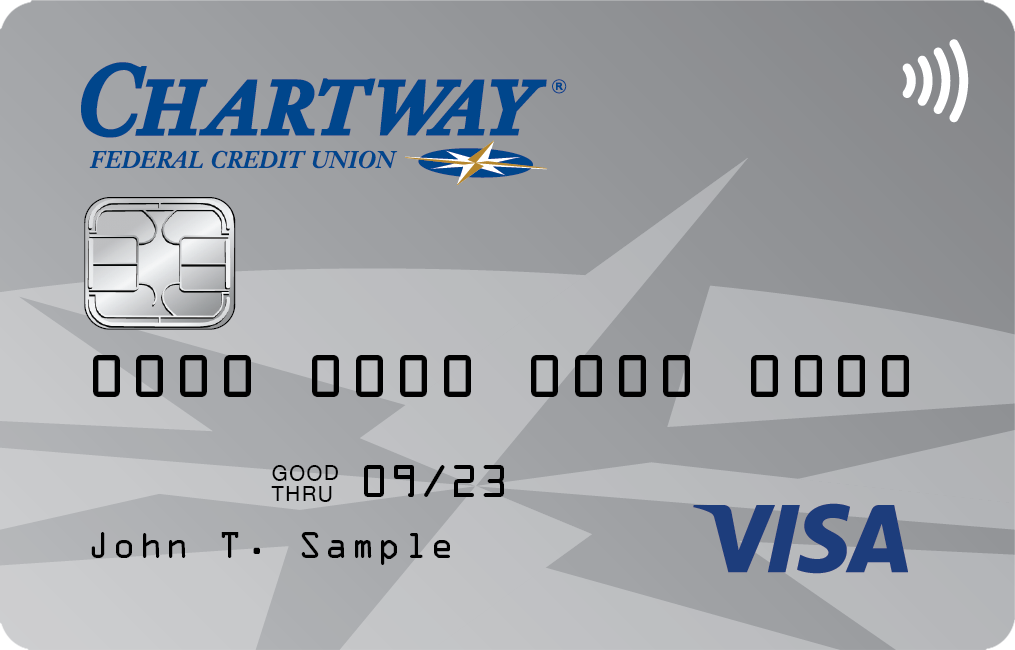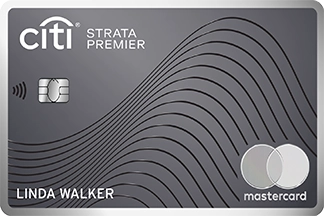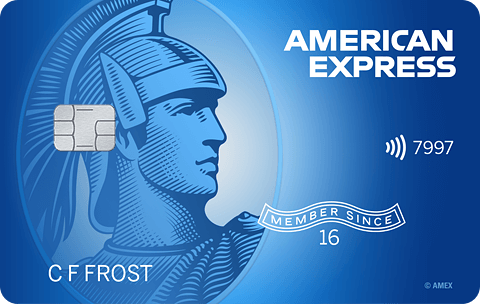- myFICO® Forums
- FICO Scoring and Other Credit Topics
- Understanding FICO® Scoring
- A Challenge to myFICO members -- Individual utiliz...
- Subscribe to RSS Feed
- Mark Topic as New
- Mark Topic as Read
- Float this Topic for Current User
- Bookmark
- Subscribe
- Mute
- Printer Friendly Page
A Challenge to myFICO members -- Individual utilization versus overall utilization there
Is your credit card giving you the perks you want?
Browse credit cards from a variety of issuers to see if there's a better card for you.
- Mark as New
- Bookmark
- Subscribe
- Mute
- Subscribe to RSS Feed
- Permalink
- Report Inappropriate Content
A Challenge to myFICO members -- Individual utilization versus overall utilization there
I know many of you accept as proven my hypothesis below. I'm not looking for opinions but people willling to guinea pig this in the interests of science. There is a fair amount of urban lore floating around.
So if you are not interested, just ignore. I know what people assume is true.
I would like to see if we can pool our knowledge and try to determine once and for all the impact of higher utilization on one card versus spreading the same balance over multiple cards.
People seem to go to great lengths to make sure they have two cards reporting a 30% balance versus one card reporting 60% balance with the same overall utilization.
I am not sure I can paricipate since I have one card at 66% for owing 5K on a 7.5K limit (tax bill). I will say when I added that 5K debt, my scores actually either went up or stayed unchanged.
I have a feeling if there is any difference between spreading out the same balance over a number of cards versus putting it on one card, would be nearly the same assuming you did not go over 90% on the one card.
Are people willing to test this out? Maybe experiment using a low limit Comenity or Target card, putting say 80% of a $300 limit on that one card and the next month spreading out that same balance over multiple cards and another month of putting that same balance on a higher limit card?
At the same time we can also test the effect of having multiple cards report a balance versus one card
Others on here could better design a test, but just as we have figured out the 10% sweet spot on installment loans, we could settle this once and for all.
Any takers?
- Mark as New
- Bookmark
- Subscribe
- Mute
- Subscribe to RSS Feed
- Permalink
- Report Inappropriate Content
Re: A Challenge to myFICO members -- Individual utilization versus overall utilization there
There is really nothing to test. > 30% (it might be 35%) on one card is worse for your credit than two cards with a 15% balance.
- Mark as New
- Bookmark
- Subscribe
- Mute
- Subscribe to RSS Feed
- Permalink
- Report Inappropriate Content
Re: A Challenge to myFICO members -- Individual utilization versus overall utilization there
@Mattopotamus wrote:There is really nothing to test. > 30% (it might be 35%) on one card is worse for your credit than two cards with a 15% balance.
With all due respect, I think you are wrong. At least any change is not material in my hypothesis.
- Mark as New
- Bookmark
- Subscribe
- Mute
- Subscribe to RSS Feed
- Permalink
- Report Inappropriate Content
Re: A Challenge to myFICO members -- Individual utilization versus overall utilization there
Great idea.. I think we have a thread like this somewhere but I can't remember. I also feel like so many other factors play a role. Here is something I just did though for a data point.
Cap1 had balance of $1,251 (11% util)
Barclay had balance of $961 (10% util)
NFCU had balance of $8,435 (34% util)
NFCU #2 had balance of $600 (3% util)
PAID ALL DOWN TO:
NFCU has balance of $3,000 (12% util)
Only gained 1-6 FICO points depending on CRA. Not a huge difference!
801 EQ FICO 06/2022
797 TU FICO 04/2022
793 EX FICO 04/2022
$30k NFCU Platinum | $30.7k NFCU cashRewards Sig | $15k NavChek | $7.1k Cap1 Quicksilver | $10k Amazon Store | $19k Cap1 VentureOne | $16k Barclay Aviator | $5k Chase Freedom | $5k Chase Sapphire Preferred | $9k Costco Visa | $20k AMEX BCE | AMEX Gold | NFCU Platinum #2 $19.3k | Apple $8.5k
- Mark as New
- Bookmark
- Subscribe
- Mute
- Subscribe to RSS Feed
- Permalink
- Report Inappropriate Content
Re: A Challenge to myFICO members -- Individual utilization versus overall utilization there
@CH-7-Mission-Accomplished wrote:I would like to see if we can pool our knowledge and try to determine once and for all the impact of higher utilization on one card versus spreading the same balance over multiple cards.
People seem to go to great lengths to make sure they have two cards reporting a 30% balance versus one card reporting 60% balance with the same overall utilization.
I am not sure I can paricipate since I have one card at 66% for owing 5K on a 7.5K limit (tax bill). I will say when I added that 5K debt, my scores actually either went up or stayed unchanged.
I have a feeling if there is any difference between spreading out the same balance over a number of cards versus putting it on one card, would be nearly the same assuming you did not go over 90% on the one card.
Are people willing to test this out? Maybe experiment using a low limit Comenity or Target card, putting say 80% of a $300 limit on that one card and the next month spreading out that same balance over multiple cards and another month of putting that same balance on a higher limit card?
At the same time we can also test the effect of having multiple cards report a balance versus one card
Others on here could better design a test, but just as we have figured out the 10% sweet spot on installment loans, we could settle this once and for all.
Any takers?
It seems pretty clear to me that
1. it's better not to have any card with more than 29% utilization;
2. it's optimum to have less than half of your cards reporting a balance, but to have at least one card reporting a balance; and
3. it's best for your overall utilization to be 9% or less.
How much finer a point do I need on it?































Total revolving limits 568220 (504020 reporting) FICO 8: EQ 689 TU 691 EX 682
- Mark as New
- Bookmark
- Subscribe
- Mute
- Subscribe to RSS Feed
- Permalink
- Report Inappropriate Content
Re: A Challenge to myFICO members -- Individual utilization versus overall utilization there
@Scupra wrote:Great idea.. I think we have a thread like this somewhere but I can't remember. I also feel like so many other factors play a role. Here is something I just did though for a data point.
Cap1 had balance of $1,251 (11% util)
Barclay had balance of $961 (10% util)
NFCU had balance of $8,435 (34% util)
NFCU #2 had balance of $600 (3% util)
PAID ALL DOWN TO:
NFCU has balance of $3,000 (12% util)
Only gained 1-6 FICO points depending on CRA. Not a huge difference!
So in your case you dropped your lowest individual utilization from 34% to 12%? What was the change in overall utilization? Also you had another moving part going from four cards reporting versus one card.
There is another factor for people with only two cards. If they split their reported balance between two cards, they then have 100% of their cards reporting a balance.
- Mark as New
- Bookmark
- Subscribe
- Mute
- Subscribe to RSS Feed
- Permalink
- Report Inappropriate Content
Re: A Challenge to myFICO members -- Individual utilization versus overall utilization there
@CH-7-Mission-Accomplished wrote:
@Mattopotamus wrote:There is really nothing to test. > 30% (it might be 35%) on one card is worse for your credit than two cards with a 15% balance.
With all due respect, I think you are wrong. At least any change is not material in my hypothesis.
Then why through some credit tracking servies would that be listed as a factor? Obviously a Fako, but credit karma for example will list "things hurting your score" and a single card with a balance over 30% is a factor. I think experian may also do the same.
- Mark as New
- Bookmark
- Subscribe
- Mute
- Subscribe to RSS Feed
- Permalink
- Report Inappropriate Content
Re: A Challenge to myFICO members -- Individual utilization versus overall utilization there
@SouthJamaica wrote:
@CH-7-Mission-Accomplished wrote:I would like to see if we can pool our knowledge and try to determine once and for all the impact of higher utilization on one card versus spreading the same balance over multiple cards.
People seem to go to great lengths to make sure they have two cards reporting a 30% balance versus one card reporting 60% balance with the same overall utilization.
I am not sure I can paricipate since I have one card at 66% for owing 5K on a 7.5K limit (tax bill). I will say when I added that 5K debt, my scores actually either went up or stayed unchanged.
I have a feeling if there is any difference between spreading out the same balance over a number of cards versus putting it on one card, would be nearly the same assuming you did not go over 90% on the one card.
Are people willing to test this out? Maybe experiment using a low limit Comenity or Target card, putting say 80% of a $300 limit on that one card and the next month spreading out that same balance over multiple cards and another month of putting that same balance on a higher limit card?
At the same time we can also test the effect of having multiple cards report a balance versus one card
Others on here could better design a test, but just as we have figured out the 10% sweet spot on installment loans, we could settle this once and for all.
Any takers?
It seems pretty clear to me that
1. it's better not to have any card with more than 29% utilization;
2. it's optimum to have less than half of your cards reporting a balance, but to have at least one card reporting a balance; and
3. it's best for your overall utilization to be 9% or less.
How much finer a point do I need on it?
Just because stuff is repeated over and over does not make it a fact. What harm is there in a test?
I sincerely believe that if you have one card reporting a 1K balance on a 10K limit versus 1 card reporting 1K balance on a 10K limit, with a total reported balance of 1K, there would be little if any difference.
If you don't want to do the test, don't do it. Easy peasy.
The 30% number is a fallacy. It originated from the fact that 30% of the FICO score is based on overall utilization.
I want to see data not opinions.
- Mark as New
- Bookmark
- Subscribe
- Mute
- Subscribe to RSS Feed
- Permalink
- Report Inappropriate Content
Re: A Challenge to myFICO members -- Individual utilization versus overall utilization there
@Mattopotamus wrote:
@CH-7-Mission-Accomplished wrote:
@Mattopotamus wrote:There is really nothing to test. > 30% (it might be 35%) on one card is worse for your credit than two cards with a 15% balance.
With all due respect, I think you are wrong. At least any change is not material in my hypothesis.
Then why through some credit tracking servies would that be listed as a factor? Obviously a Fako, but credit karma for example will list "things hurting your score" and a single card with a balance over 30% is a factor. I think experian may also do the same.
Not looking for an argument. Looking for a test. Not interested, move on.
- Mark as New
- Bookmark
- Subscribe
- Mute
- Subscribe to RSS Feed
- Permalink
- Report Inappropriate Content
Re: A Challenge to myFICO members -- Individual utilization versus overall utilization there
@CH-7-Mission-Accomplished wrote:
@Scupra wrote:Great idea.. I think we have a thread like this somewhere but I can't remember. I also feel like so many other factors play a role. Here is something I just did though for a data point.
Cap1 had balance of $1,251 (11% util)
Barclay had balance of $961 (10% util)
NFCU had balance of $8,435 (34% util)
NFCU #2 had balance of $600 (3% util)
PAID ALL DOWN TO:
NFCU has balance of $3,000 (12% util)
Only gained 1-6 FICO points depending on CRA. Not a huge difference!
So in your case you dropped your lowest individual utilization from 34% to 12%? What was the change in overall utilization? Also you had another moving part going from four cards reporting versus one card.
There is another factor for people with only two cards. If they split their reported balance between two cards, they then have 100% of their cards reporting a balance.
Yes, I had a lot going on so not too much help.. Overall util was 10% and dropped to 3%
801 EQ FICO 06/2022
797 TU FICO 04/2022
793 EX FICO 04/2022
$30k NFCU Platinum | $30.7k NFCU cashRewards Sig | $15k NavChek | $7.1k Cap1 Quicksilver | $10k Amazon Store | $19k Cap1 VentureOne | $16k Barclay Aviator | $5k Chase Freedom | $5k Chase Sapphire Preferred | $9k Costco Visa | $20k AMEX BCE | AMEX Gold | NFCU Platinum #2 $19.3k | Apple $8.5k